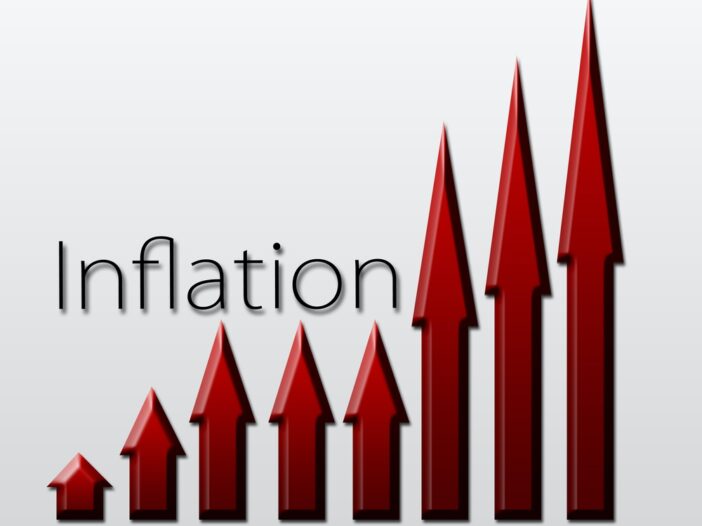In today’s Money Morning…the Fed looks like it is at its own half-time crossroads…thick and fast rate rises…the state of play…and more…
Watching what the Fed is doing right now feels like I’m watching the 2017 Super Bowl.
If you’re unfamiliar with said game, the New England Patriots were down 21-3 at half-time against the Atlanta Falcons, with the deficit blowing out to 28-3 by midway through the third quarter.
But, against all odds, the Patriots somehow managed to tie the game. They scored an incredible 25 straight points in a row, right down to the last few seconds of regulation.
Then, with momentum on their side, the Patriots practically stole the win in overtime — securing their fifth franchise title and cementing their legacy as one of the greatest teams to play American football.
It was the greatest sporting comeback in the highest stakes match I’ve ever seen. The sheer grit and determination to turn around that outcome was incredible.
And right now, with their backs firmly against the wall, the Fed looks like it is at its own half-time crossroads. A moment where they are going to have to dig just as deep as the Patriots did to overcome their battle with inflation.
Which is precisely why Jerome Powell is no longer pulling any punches.
But if you’re expecting a Tom Brady performance from the Fed chair…well, I wouldn’t hold your breath.
Thick and fast rate rises
Yes, if you haven’t heard, the Fed has been forced to pivot on their rate targets hard and fast.
Not only are they bringing forward their tapering of asset purchases, but they’re now expecting to raise rates four times next year. A response that proves just how wrong their ‘transitory’ remarks about inflation were.
However, that doesn’t mean they’ve changed their agenda entirely. As the official media release notes:
‘The Committee seeks to achieve maximum employment and inflation at the rate of 2 percent over the longer run.
‘With inflation having exceeded 2 percent for some time, the Committee expects it will be appropriate to maintain this target range until labor market conditions have reached levels consistent with the Committee’s assessments of maximum employment.’
In other words, Powell and Co still want to try and reduce unemployment while maintaining their 2% inflation target — a goal that has been tough to achieve in the wake of COVID-19.
Clearly, the Fed is hoping that as the pandemic threat eases, the correlation between the two may ease. This allows them to achieve their objective more easily.
I’m not so sure, though.
It seems to me as though the US has far bigger issues in their labour market than just the pandemic, albeit the spread of the virus certainly brought a lot of these issues to light. Not to mention the government response via stimulus that has helped disincentivise people to seek work.
But that’s a whole other can of worms I don’t have time to get into right now.
My point is, the Fed is playing catch up on an issue that they have grossly underestimated. And while this shift in policy will hopefully help ease rising prices, it may be too little too late.
The state of play
All this then leaves everyday investors, like yourself, in a somewhat awkward position.
We’ve still yet to see how the RBA will respond to our own inflation threat, but don’t be surprised if they also start eyeing more aggressive rate rises.
Granted, Dr Lowe isn’t ready to falter like his US counterpart just yet:
‘The condition for an increase in the cash rate will not be met next year. It is likely to take time for that condition to be met and the board is prepared to be patient.’
He’s still sticking to the same sort of rhetoric we heard from Powell earlier this year.
Time will tell, though, if Lowe has to backflip on this outlook too. Because I certainly wouldn’t be surprised if he does.
And if that were to happen, and rates did increase in 2022, then things could get ugly.
It would certainly dampen a lot of the enthusiasm in property that we’ve seen recently. A factor that is not only a consideration for recent or prospective buyers, but also the big banks and other lenders.
As for stocks in general, higher rates mean less liquidity in general. After all, it will make accessing new capital or tapping existing lines a little harder — something that you’ll certainly want to consider for the sectors you’re investing in.
Either way, whatever happens next, it is clear that central bankers are still as lost as ever.
Because no matter how much they may think or act like they’re in control, it is clear that the market cannot be truly tamed. Let’s just hope that this latest blow doesn’t lead to a full-on blowout…
Regards,
 |
Ryan Clarkson-Ledward,
Editor, Money Morning
Ryan is also the Editor of Australian Small-Cap Investigator, a stock tipping newsletter that hunts down promising small-cap stocks. For information on how to subscribe and see what Ryan’s telling subscribers right now, click here.

